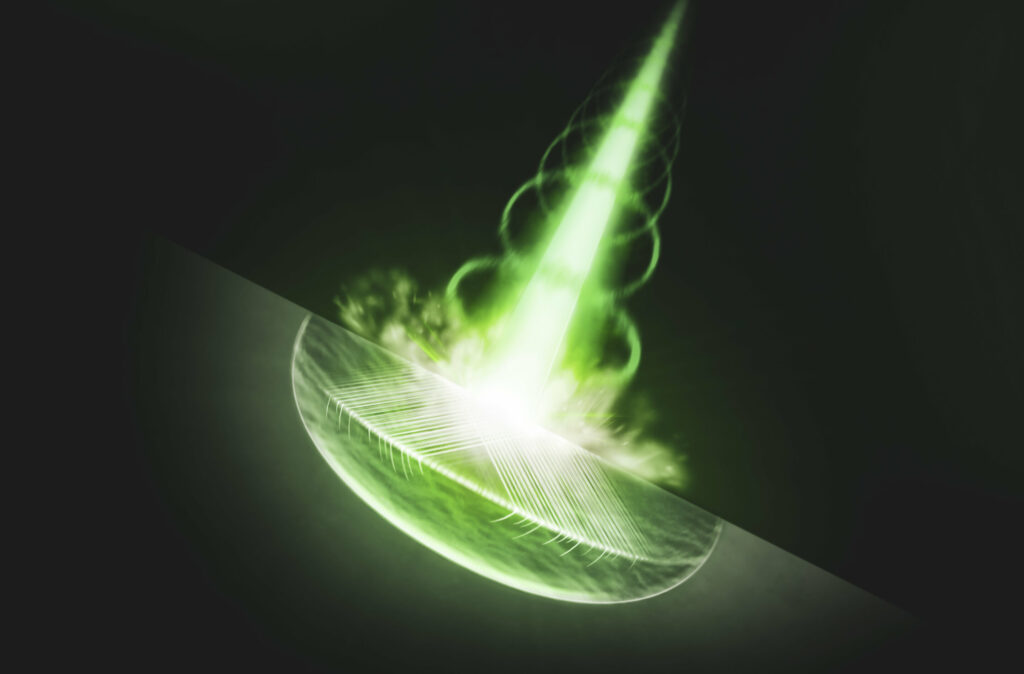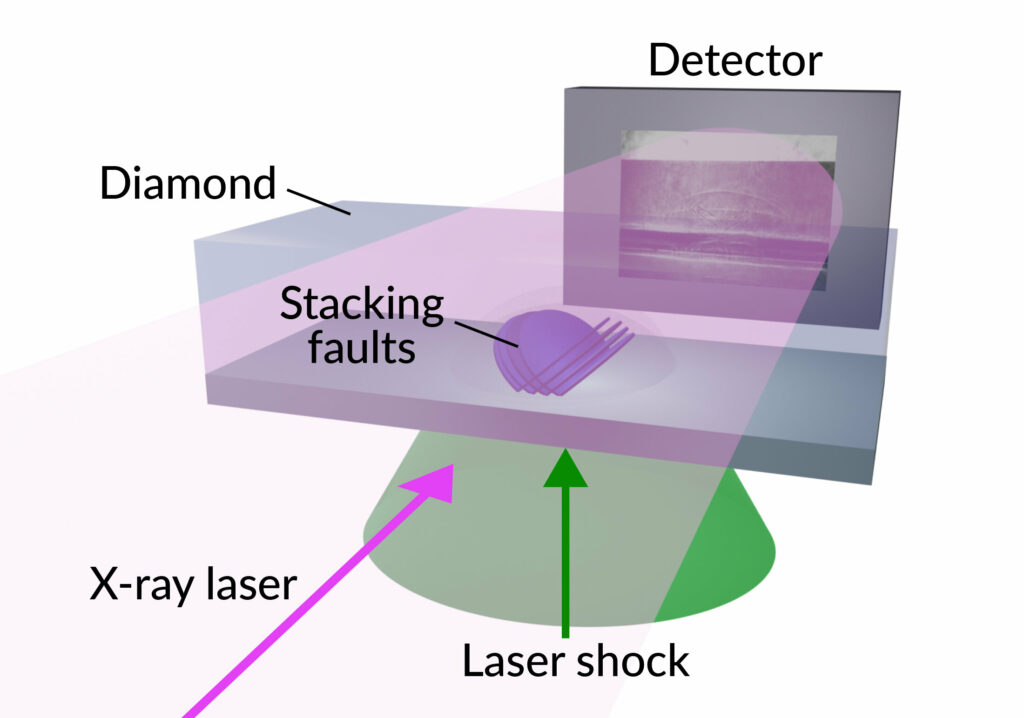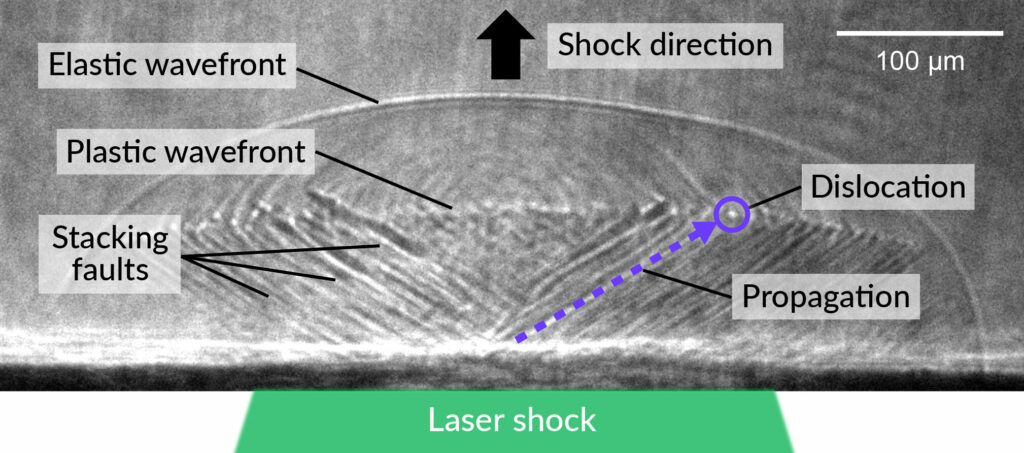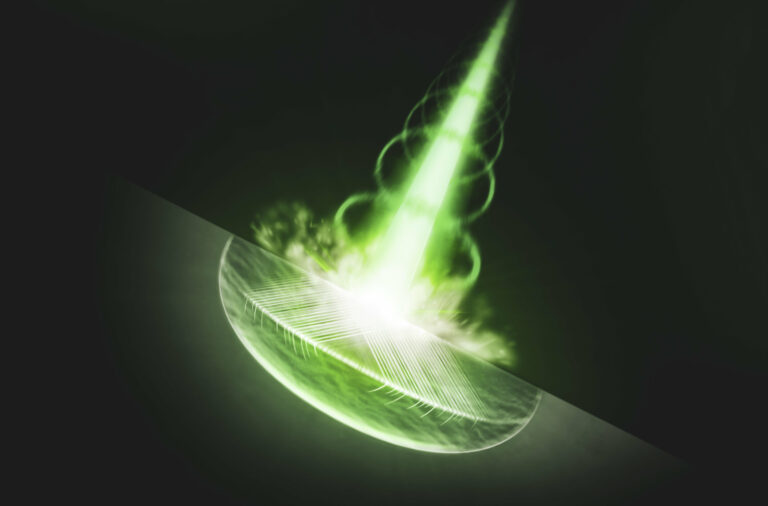“Research Reveals Rapid Propagation of Defects in Diamond Exceeding the Speed of Sound”
Resolving a debate spanning over half a century, researchers have uncovered that minuscule linear defects can propagate through a material at a speed surpassing that of sound waves. These linear defects, known as dislocations, are responsible for conferring strength and workability to metals, yet they also have the potential to lead to catastrophic material failures—such as when opening a soda can’s pull tab.
The remarkable speed at which these dislocations travel has given scientists a newfound understanding of the unconventional forms of damage they could inflict on a wide array of materials under extreme conditions. This encompasses scenarios ranging from earthquake-induced rock rupture to the deformation of aircraft shielding materials subjected to intense stress.
The study, co-led by Leora Dresselhaus-Marais, a professor at the Department of Energy’s SLAC National Accelerator Laboratory and Stanford University, alongside Professor Norimasa Ozaki at Osaka University, employed X-ray radiography—similar to medical X-rays—to directly measure the velocity of propagating dislocations through diamond. The findings, detailed in Science, offer insights applicable to various materials.

Chasing the speed of sound
For nearly six decades, scientists have engaged in a debate regarding the ability of dislocations to travel through materials at speeds surpassing that of sound. Numerous studies have suggested that this phenomenon is not possible. However, certain computer models have proposed that dislocations could indeed achieve this, provided they initiate their movement at a speed exceeding that of sound.
Achieving instantaneously high speeds for dislocations would necessitate a significant shock. One factor contributing to this challenge is that sound travels much faster through solid materials compared to its speed through air or water. The speed of sound varies based on the nature and temperature of the material. For instance, while the speed of sound through air is generally cited as 761 mph, it rises to 3,355 mph through water and an astonishing 40,000 mph in diamond—the hardest material known.

Adding further complexity, there exist two types of sound waves in solids. Longitudinal waves, similar to those in air, are one type. However, due to the resistance solids pose to sound passage, they also harbor slower-moving waves known as transverse sound waves. Understanding whether ultrafast dislocations can surpass either of these sound barriers holds significance from both fundamental scientific and practical perspectives.
When dislocations exceed the speed of sound, their behavior becomes markedly different, leading to unexpected failures that have, until now, only been theoretical models. In the absence of measurements, the extent of damage caused by these ultrafast dislocations remains unknown. Kento Katagiri, a postdoctoral scholar in the research group and the paper’s lead author, emphasizes the importance of such knowledge, stating,
“If a structural material fails more catastrophically than anyone expected because of its high rate of failure, that’s not so good. In scenarios like a fault rupturing through rock during an earthquake, it could result in more widespread damage. We need to gain a deeper understanding of this type of catastrophic failure.” The outcomes of this study, according to Dresselhaus-Marais, “could indicate that our understanding of the fastest possible materials failure may have been inaccurate.”
The pop-top effect
In order to capture the initial direct visualizations of the speed at which dislocations move, Dresselhaus-Marais and her team conducted experiments at the SACLA X-ray free-electron laser in Japan. These experiments were conducted on minute crystals of synthetic diamond.
According to Katagiri, diamond serves as an exceptional medium for investigating the failure mechanisms of crystalline materials. Its deformation mechanism is comparatively simpler than that observed in metals, facilitating the interpretation of intricate ultrafast X-ray imaging experiments.

“To comprehend the mechanisms of damage, we must pinpoint features in our images that unequivocally represent dislocations and distinguish them from other types of defects,” he stated. When two dislocations encounter each other, they either attract or repel, giving rise to additional dislocations.
For instance, when opening a can of soda crafted from an aluminum alloy, numerous pre-existing dislocations in the lid, formed during its shaping process, interact and generate new dislocations by the trillions. This cascade leads to an eventual critical failure as the can’s top flexes, causing the pop top to snap open. These interactions and their behaviors dictate all the mechanical properties observed in materials. “In diamond, there are only four types of dislocation, whereas iron, for instance, has 144 different possible types of dislocations,” Dresselhaus-Marais highlighted. Despite diamond being considerably harder than metal, the researchers emphasize that, much like a soda can, it can still undergo bending by forming billions of dislocations when subjected to a sufficiently intense shock.
Making X-ray images of shock waves
At SACLA, the research team utilized intense laser light to generate shock waves within diamond crystals. Subsequently, they conducted a series of ultrafast X-ray imaging sessions to capture the formation and propagation of dislocations on a timescale measured in billionths of a second. Only X-ray free-electron lasers possess the capability to deliver X-ray pulses of sufficient brevity and brightness to document this intricate process.
The initial shock wave bifurcated into two distinct types of waves, both continuing their trajectory through the crystal. The first wave, identified as an elastic wave, caused temporary deformation in the crystal, with its atoms swiftly rebounding to their original positions, akin to a stretched and released rubber band. The second wave, denoted as a plastic wave, induced permanent deformation in the crystal by introducing minor irregularities in the repeating atomic patterns constituting the crystal structure.

These minuscule displacements, known as dislocations, give rise to “stacking faults,” wherein adjacent layers of the crystal undergo a shift relative to each other, disrupting their proper alignment. These stacking faults propagate outward from the point where the laser interacts with the diamond, and a mobile dislocation exists at the leading edge of each stacking fault.
Through X-ray analysis, the researchers observed that these dislocations traverse the diamond at a speed exceeding that of the slower transverse sound waves—a phenomenon previously unseen in any material. Looking ahead, Katagiri mentions that the team intends to revisit an X-ray free-electron facility, such as SACLA or SLAC’s Linac Coherent Light Source (LCLS), to investigate whether dislocations can surpass the higher longitudinal speed of sound in diamond.
This will necessitate more potent laser shocks. Should they achieve this breakthrough and surpass the sound barrier, the dislocations would be deemed genuinely supersonic. Leora Dresselhaus-Marais is an investigator affiliated with the Stanford Institute for Materials and Sciences (SIMES) at SLAC and the Stanford PULSE Institute. Researchers from Osaka University, the Japan Synchrotron Radiation Research Institute, RIKEN SPring-8 Center, and Nagoya University in Japan; the U.S. Department of Energy’s Lawrence Livermore National Laboratory; Culham Science Center in the UK; and École Polytechnique in France also contributed to this research.
This article is republished from PhysORG under a Creative Commons license. Read the original article.
Do not forget to share your opinion with us to provide you with the best posts !





0 Comments